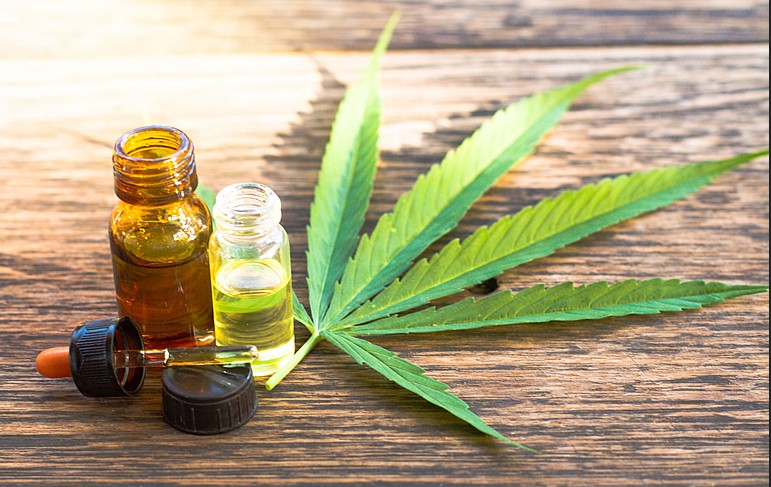Cannabis (i.e., medical marijuana) has been shown in numerous studies to be utilized as a substitute for prescription painkillers. Marijuana’s intoxicating qualities, on the other hand, deter many consumers. Cannabidiol (CBD), a non-intoxicating component found in cannabis, is used to treat a variety of illnesses, including pain relief. We noticed that some of the finest CBD oils might help with pain management treatment.

However, it’s crucial to note that CBD oil isn’t FDA-approved for pain treatment. As a result, the items and claims made in this piece are not overseen by the FDA. As a result, they aren’t meant to diagnose, treat, cure, or prevent any illness or medical condition.
CBD has already received a lot of attention, even without the FDA’s evaluation. You’ve undoubtedly seen prominent news outlets cover CBD or read about it being recommended by high-profile social figures for various types of pain alleviation.
How Does CBD Work?
For millennia, cannabis has been used to treat pain and inflammation. The earliest records of the medical use of cannabis date back to ancient China, when Emperor Shen-Nung put it in the Chinese pharmacopeia alongside other therapeutic medicines. Leaves were applied as a poultice to reduce pain and discomfort for the purpose of encouraging recovery.
Despite its widespread use, scientists have only recently begun to understand the mechanisms by which cannabis alleviates pain. CBD and other phytocannabinoids have been in the limelight of modern medicine since 1992, when researchers discovered the endocannabinoid system.
The endocannabinoid system, one of the most essential neurochemical systems in the body, is made up of several components. It works by connecting with the endocannabinoid system — a network of hormones and receptors that aids in many fundamental bodily functions. Cannabis plant chemicals are quite comparable to our natural hormones produced via the endocannabinoid system.
CBD and other cannabinoids can modulate a variety of essential functions via their interaction with the endocannabinoid system, including:
- Appetite
- Immune function
- Memory
- Mood
- Stress
- Sensory perception (including pain)
- Inflammation
- Reproductive health
- Nerve function
- Sleep
How Can CBD Reduce Pain Transmission?
What is the significance of this? The answer may be found in how pain is transmitted to the brain. When we harm ourselves, neighboring cells release chemicals that start a chain reaction of inflammation and sensation generation, resulting in pain transmission.
The sensation of pain is then carried to the spinal cord via a web of nerves that span the entire body. The pain signal is transmitted into the spine, where it is received by a checkpoint (opioid and vanilloid receptors) intended to limit the amount of information sent to the brain for processing. This serves as a border crossing. Border security guards whether you’re permitted to enter and what you can bring with you.
These barriers can keep the amount of pain signal that makes it to the brain to a minimum. The brain perceives more pain if more pain signals are allowed to pass. If the discomfort is stopped at the border, the brain senses less pain. Pain-relieving medications work by stimulating opioid receptors, which are important traffic gates for sending pain information to the brain.
CBD works in a similar way, however it acts through a different receptor known as the vanilloid receptors. These vanilloid receptors are responsible for controlling nociceptive pain sensations influenced by heat or irritation. CBD has been found to modulate this vanilloid receptor, causing pain signals from inflammatory causes such as arthritis, muscular damage, and infection to be reduced.
CBD has other ways it can limit pain transmission as well:
- CBD has anti-inflammatory effects, which may help with a variety of health issues.
- CBD functions as an antioxidant, aiding the body’s resistance to and recovery from injury.
- CBD reduces muscular spasms and tightness, resulting in less pain.
There is still a lot more study to be done in order to fully comprehend how CBD and other active cannabinoids may assist with pain. Every year, dozens of new research papers are published in an effort to construct a clear picture of how CBD functions, what the drug’s advantages are, and where its limits exist.
What Do the Studies Say?
CBD’s effect on pain is being studied increasingly frequently. In a research published in the European Journal of Pain, researchers investigated the influence of transdermal CBD on rats suffering from induced arthritis. For four days, the researchers applied CBD gels to the rats’ painful joints in four different concentrations (0.6, 3.1, 6.2, and 62.3mg) per day (n = 8).
The researchers discovered that CBD gel reduced joint swelling by a stunning 100%. Surprisingly, the 62.3mg dose was no more effective than the 6.2mg dose.
Meanwhile, a study published in Frontiers in Immunology last year investigated the anti-inflammatory effects of CBD on mice. After ten days of taking CBD, researchers observed a reduction in inflammatory markers in mice. They used a mouse model of encephalitis to mimic the symptoms of multiple sclerosis on a person’s body.
Cannabidiol was found to make pain feel less unpleasant in scientific research, although it did not reduce experimental pain intensity.
In 2021, researchers at Syracuse University conducted another study that revealed CBD to have pain-relieving properties. It’s significant because it was the first ever clinical pain trial to examine CBD’s impact on people. Cannabidiol reduced experimental pain unpleasantness but did not reduce experimental pain intensity, according to the findings.
CBD was discovered to be more effective than a placebo in reducing pain symptoms, according to the study. This is certainly an important first step toward acceptance of CBD as a pain-relieving option.
Using CBD Oil for Pain
Typically, CBD oil is ingested by placing it under the tongue and holding it for up to 60 seconds before swallowing. This method guarantees that a portion of the CBD goes into your circulation via your mouth.
However, when it comes to CBD oil for pain alleviation, putting it on the painful site may be a superior alternative. You might discover that a topical solution made of cannabidiol absorbs more effectively than oil. People who frequently massage CBD on their skin notice that the treatment is more efficient.
Only apply CBD to a small area of skin if you’re using it for the first time. You must be cautious not to produce an undesirable response. Gradually increase the amount you use until you reach the “minimum therapeutic dose.” This is a phrase that refers to a scenario in which you utilize the smallest quantity feasible in order to achieve the intended outcome.
Benefits of CBD Oil – Anecdotal Evidence
Although CBD oil is not yet recognized by the FDA as a pain medication, it improves the lives of millions of people throughout the world. Here are some samples of reader-submitted statements regarding CBD’s impact on daily discomfort:
Best CBD Oil for Pain: Side Effects
There are some potential negative effects associated with hemp oil, despite the fact that it is as safe as CBD. When compared to the severe side effects linked with prescription painkillers and other narcotic pain relievers, these adverse consequences are quite minor.
In terms of highlighting CBD’s adverse effects, the finest source is the clinical trials of Epidiolex (an FDA-approved cannabidiol medicine used to treat two rare types of epilepsy). Cannabidiol users may experience the following negative side effects according to the studies:
- Somnolence
- Decreased appetite
- Diarrhea
- Transaminase elevations
- Fatigue, malaise, and asthenia
- Rash
- Insomnia, sleep disorder, and poor-quality sleep
- Infections
CBD has also been shown to have harmful interactions with a variety of other medicines, including over-the-counter and prescription drugs. Furthermore, it has been suggested that CBD use may affect liver health, but this is yet to be studied. CBD is also a known catalyst for enzymes and drug metabolism. As a result, before taking CBD for pain in addition to other medications, it is critical to talk to your doctor.
Let’s look at the top CBD oil brands and their product lines now that you know more about how CBD oil for pain works! Do you want to read or watch a thorough explanation of our top CBD oil choices? Instead, here is a brief summary of our video CBD oil countdown.
